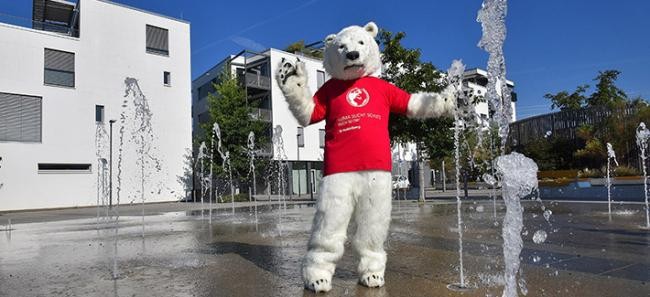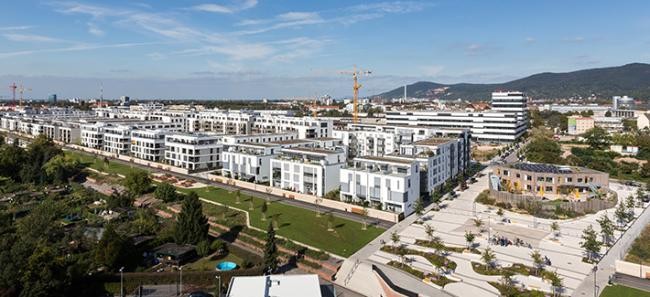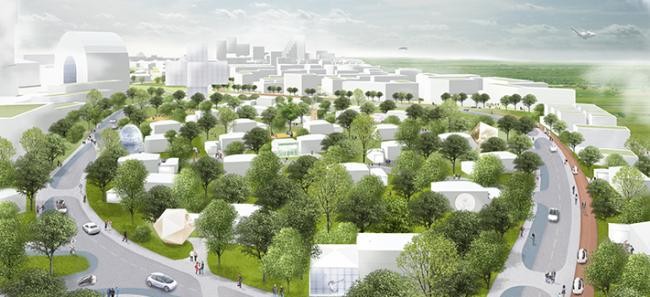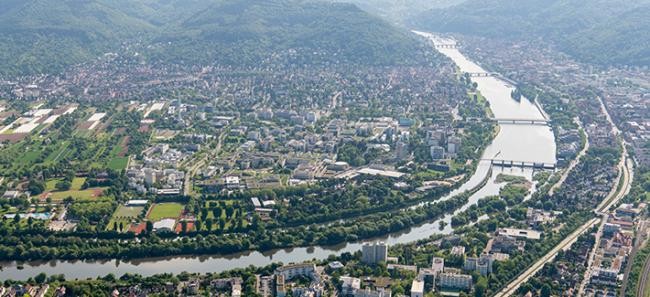HEIDABLE – HEIDelberg SustainABLE
海德堡——可持续发展型城市
| In the following we present urban development projects steering our city’s evolvement as a whole, including community; economic, cultural, and ecological developments. City planning demands an interdisciplinary, integrated, and future-oriented approach. Urban development in Heidelberg has been strongly influenced by social trends, challenges of demographic change, globalization, keeping communities together and real sustainability at the local level. New forms of participation and inclusion have also played an integral role in bringing about a strong consensus in the consciousness of residents. All measures are aimed at a future-oriented habitat worth living in - within the framework of long-term sustainability and in accordance with local population needs. |
下文中我们将为您介绍海德堡的城市发展项目。这些项目统一规划城市与社区,兼顾经济、文化及生态发展。 城市规划要求跨行业、融合性的及以未来为导向的路径。海德堡的城市发展已经受到 社会潮流、人口结构变化、全球化的强烈影响,但仍力图团结各社区,在本地水平上实现真正的可持续性。同样,新的参与及融入形式也在凝聚居民共识中扮演了关键角色。所有的发展措施都指向一个未来的宜居地 — 统一在长期可持续发展、并与本地居民的需求相适应的框架中。 |

| Heidelberg has always been aware of its limited resources; city tax revenues are lower than those of industrial cities, and the university, clinics, and research institutions all contribute to increasing demand for living space. Heidelberg’s initiative to cautiously develop into a city of the future started back in the 1970’s. Heidelberg’s population grew steadily thanks largely to refugees following the World Wars. The end of the Second World War saw the emergence of three new districts which were developed to the fullest extent. Fill in development in already urbanized areas could no longer keep up with the demand for living space. At the same time, Heidelberg engaged in renovating the historic city center, the largest collection of renaissance architecture in West Germany. Find out more about urban development in Heidelberg and it´s associated topics: climate protection, development example Bahnstadt, challenges and solutions for the conversion zones, digitalisation projects and Heidelbergs international network. |
海德堡历来清楚自己的资源短板:城市税收低于工业城市;大学、医院与研究机构的占地都提高了居民对生活空间的需求。 海德堡首次关于谨慎发展未来城市的倡议要追溯到七十年代。那时,海德堡稳健的人口增长主要归功于战后的难民。二战结束后,海德堡见证了三个新城区的诞生。如今,它们都得到了最大限度的发展。继续发展已完成城市化的区域不能够再度满足对生活空间的需求。 与此同时,海德堡正着手更新城市的历史中心区,即西德最大的文艺复兴式建筑群。 发现更多海德堡城市发展的关键词及关联主题:气候保护、发展样本-火车城、转型区的挑战及其解决方案、数字化项目、海德堡国际沟通网络。 |




.jpg?f=%2Fsite%2FHD_Satelliten%2Fget%2Fparams_E1124679435%2F1038116%2F1124673%2F1212074%2F1212084%2F1126710%2F1126711%2F1126872%2F13_teaserbild_2018_Digitales_2_Forum_Digitale_Stadt_by_Dittmer%252889%2529.jpg&w=650&h=1500)

